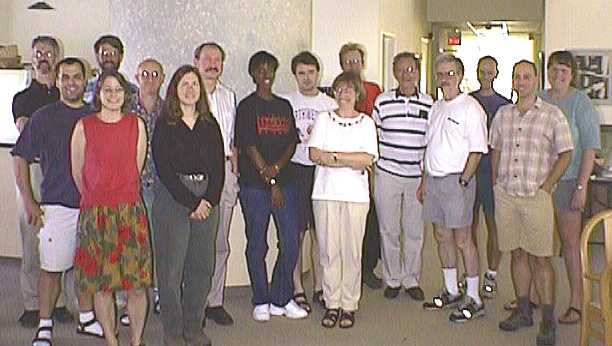NCEAS Working Groups
Integrating the statistical modeling of spatial data in ecology
Project Description
In a variety of ecological disciplines, there is growing interest in quantifying and modeling spatial patterns. This trend reflects the growing recognition of the importance of spatial processes in shaping ecological interactions. Several different approaches have been employed by ecologists for quantifying patterns in spatial data. One approach, developed originally by geographers, focuses on quantifying spatial autocorrelation and hypothesis testing. Geostatistics is another approach that was originally developed by geologists for quantifying and Interpolating spatial data. A third approach, "point process" statistics, was developed for analyzing patterns in the physical location of plants and animals. All of these methods have unique features that are desirable in ecological applications but the relationships and similarities among these methods have not been fully explored. The diversity of these various approaches is sometimes overwhelming to ecologists and may represent an impediment to the choice of effective statistical methods for the analysis of ecological data. We propose to assemble a working group of 10-12 scientists representing a spectrum of backgrounds, including pure statistics and various ecological disciplines. The group will compare these differing approaches to spatial analysis and summarize their similarities and differences. Ultimately we intend to provide a road map for ecologists to use in the selection of statistical methods for analyzing spatial data.

Principal Investigator(s)
Andrew M. Liebhold, Jessica Gurevitch
Project Dates
Start: July 18, 1999
End: January 1, 2000
completed
Participants
- Ottar N. Bjornstad
- University of California, Santa Barbara
- Gay A. Bradshaw
- University of California, Santa Barbara
- Steven I. Citron-Pousty
- University of Connecticut
- Mark Dale
- University of Alberta
- Philip Dixon
- Iowa State University
- Jennifer L. Dungan
- NASA Ames Research Center
- Marie-Josée Fortin
- Simon Fraser University
- Jessica Gurevitch
- State University of New York (SUNY)
- Michael Hohn
- West Virginia Geology and Economic Survey
- Anna Jakomulska
- University of California, Santa Barbara
- Dawn Kaufman
- University of California, Santa Barbara
- Timothy H. Keitt
- University of California, Santa Barbara
- Pierre Legendre
- Université de Montréal
- Andrew M. Liebhold
- USDA Forest Service
- Bryan Manly
- University of Otago
- Maria Miriti
- State University of New York (SUNY), Stony Brook
- Donald Myers
- University of Arizona
- Joe N. Perry
- Rothamsted Experimental Station
- Michael S. Rosenberg
- State University of New York (SUNY), Stony Brook
Products
-
Data Set / 2005
Exhaustive map and gridded maps of locations of isopod burrows and environmental variables in a desert site in Israel
-
Journal Article / 2000
On the limits and extensions of the definition of scale
-
Journal Article / 2002
Conceptual and mathematical relationships among methods for spatial analysis
-
Data Set / 2006
Exhaustive map locations of tupelo trees sampled in bottomland forests
-
Journal Article / 2002
A balanced view of scale in spatial statistical analysis
-
Journal Article / 2002
Accounting for spatial pattern when modeling organism-environment interactions
-
Journal Article / 2002
The consequences of spatial structure for the design and analysis of ecological field surveys
-
Journal Article / 2004
Effects of spatial structures on the results of field experiments
-
Data Set / 1999
Data sets for integrating the statistical modeling of spatial data in ecology
-
Journal Article / 2002
Integrating the statistical analysis of spatial data in ecology
-
Data Set / 2007
Spatial locations and size measurements of Ambrosia dumosa in Joshua Tree National Park
-
Journal Article / 2002
Illustrations and guidelines for selecting statistical methods for quantifying spatial pattern in ecological data
